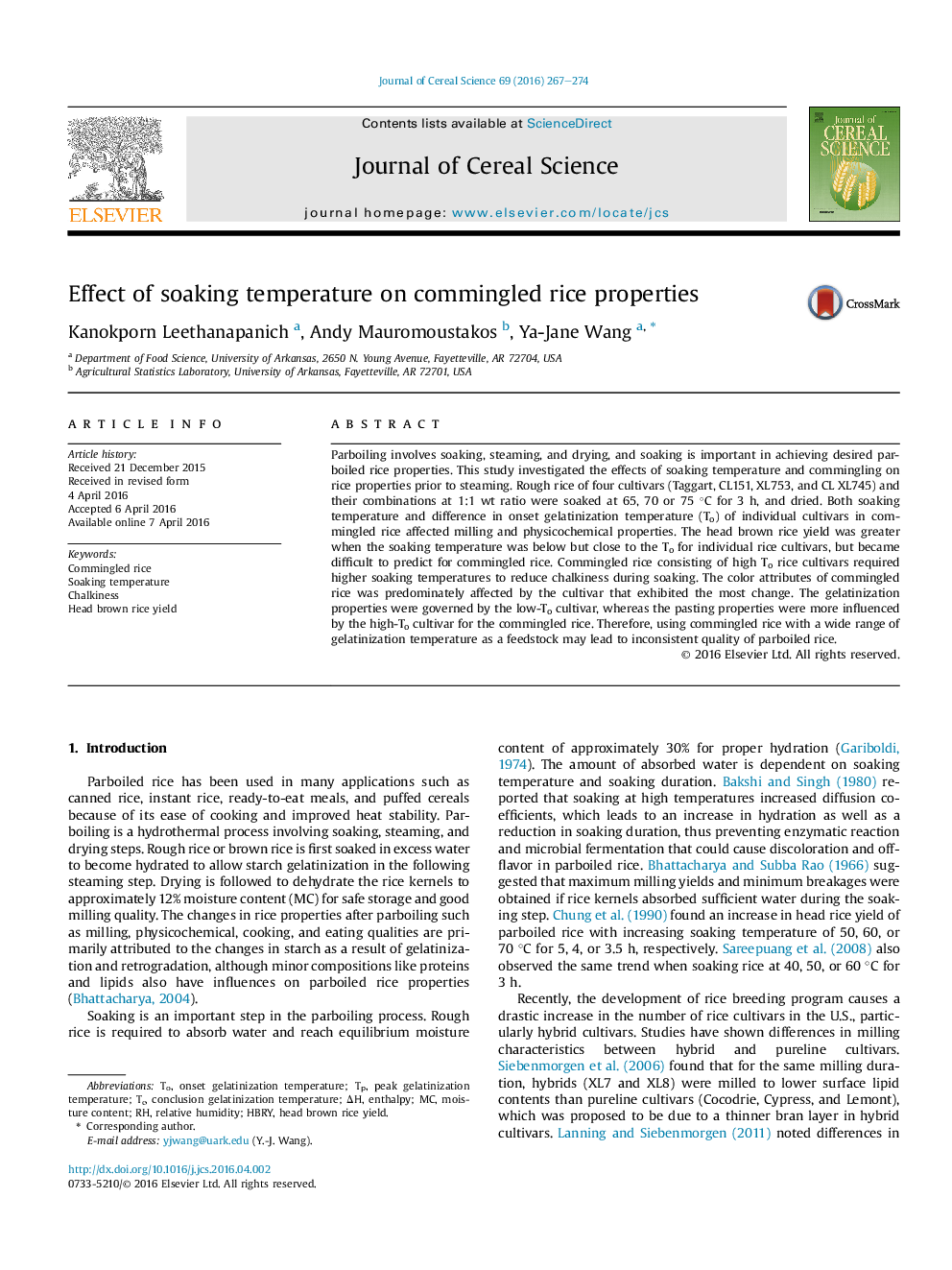| Article ID | Journal | Published Year | Pages | File Type |
|---|---|---|---|---|
| 4515593 | Journal of Cereal Science | 2016 | 8 Pages |
•Head brown rice yield was difficult to predict for commingled rice.•Commingled rice gelatinization properties were governed by the low-To cultivar.•Commingled rice pasting properties were more affected by the high-To cultivar.
Parboiling involves soaking, steaming, and drying, and soaking is important in achieving desired parboiled rice properties. This study investigated the effects of soaking temperature and commingling on rice properties prior to steaming. Rough rice of four cultivars (Taggart, CL151, XL753, and CL XL745) and their combinations at 1:1 wt ratio were soaked at 65, 70 or 75 °C for 3 h, and dried. Both soaking temperature and difference in onset gelatinization temperature (To) of individual cultivars in commingled rice affected milling and physicochemical properties. The head brown rice yield was greater when the soaking temperature was below but close to the To for individual rice cultivars, but became difficult to predict for commingled rice. Commingled rice consisting of high To rice cultivars required higher soaking temperatures to reduce chalkiness during soaking. The color attributes of commingled rice was predominately affected by the cultivar that exhibited the most change. The gelatinization properties were governed by the low-To cultivar, whereas the pasting properties were more influenced by the high-To cultivar for the commingled rice. Therefore, using commingled rice with a wide range of gelatinization temperature as a feedstock may lead to inconsistent quality of parboiled rice.
